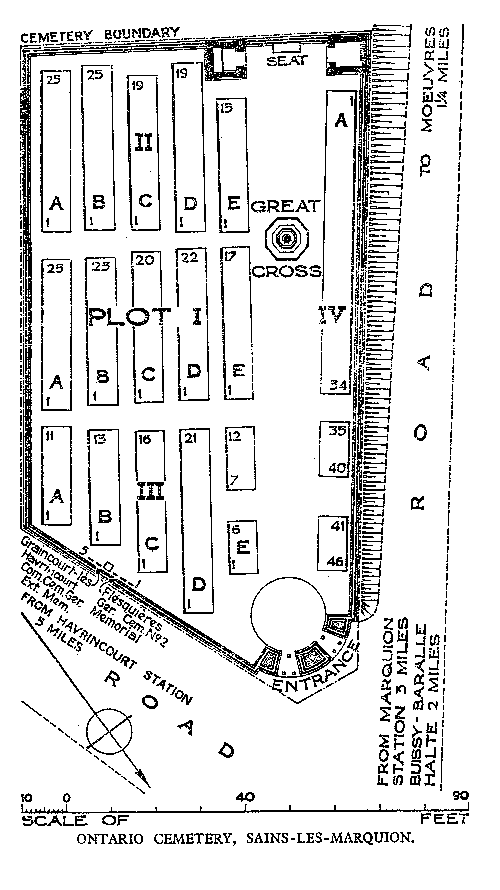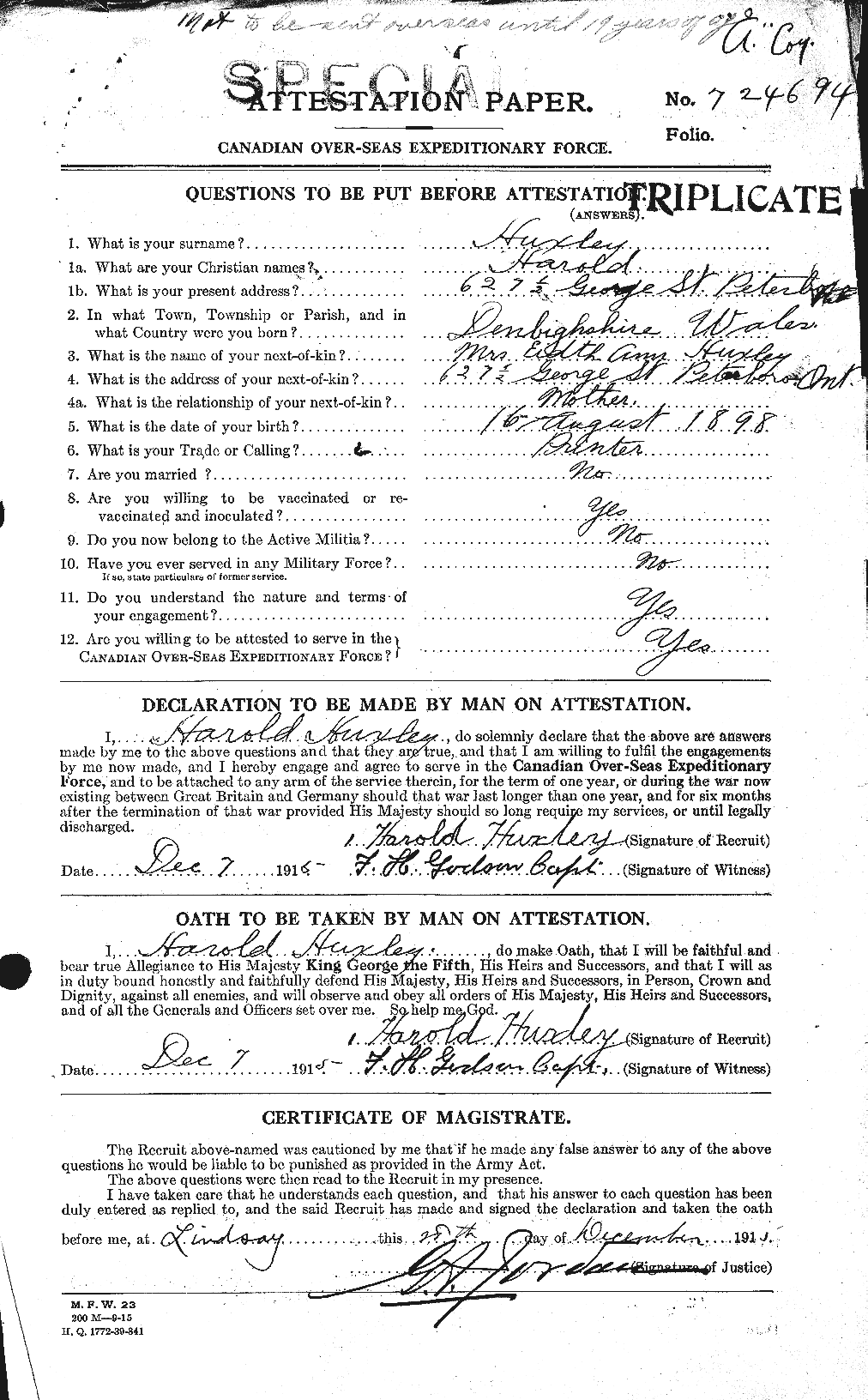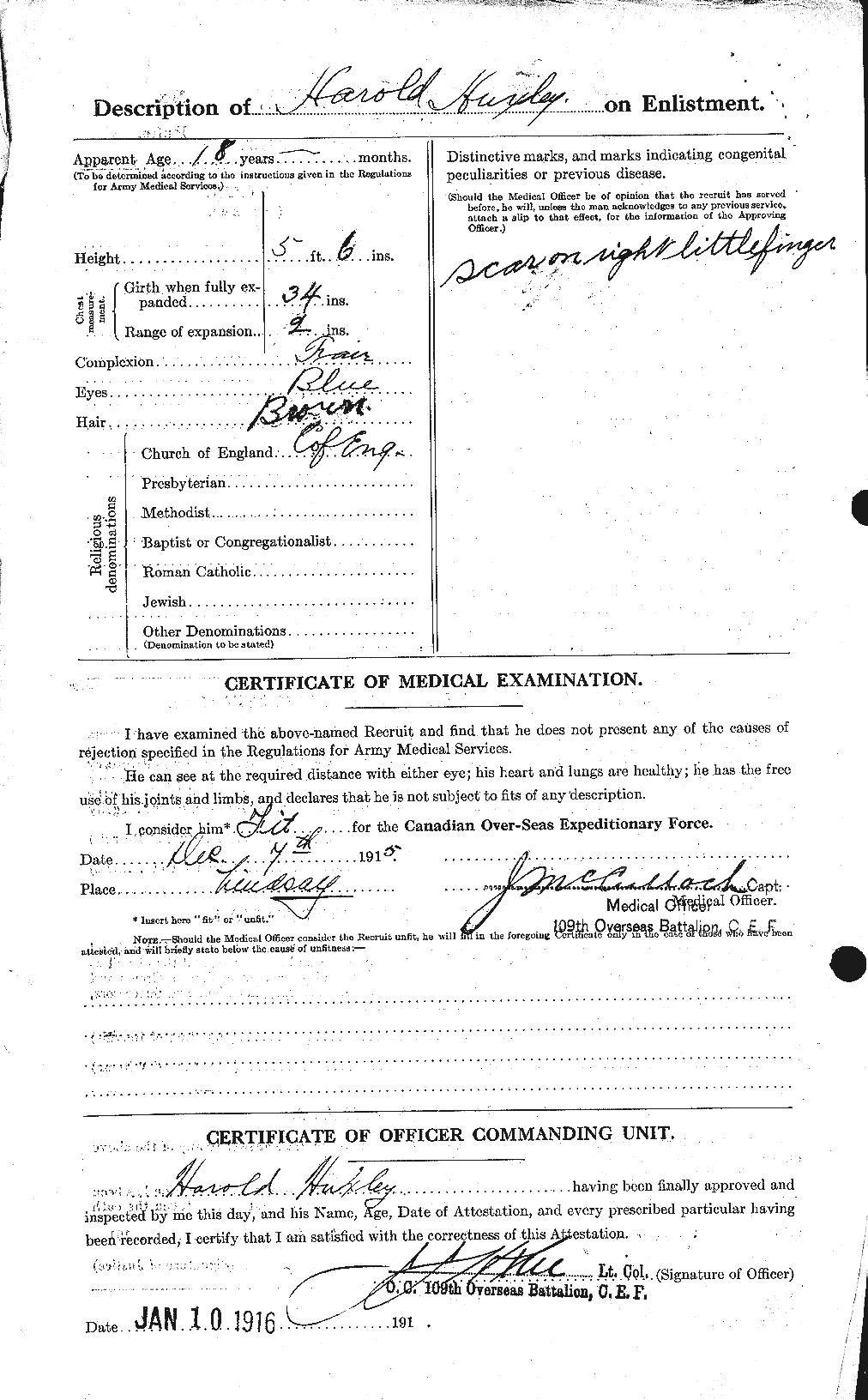
Harold Huxley
The late Harold Huxley was born on August 16th 1898. Huxley lived most of his life in Denbigh, Denbighshire which is located in North-West Wales with his Mother, Edith Huxley. There he lived within walking distance of the Printer shop at which he was employed. Huxley moved from England to Peterborough with his mother because of a job offer at a printer shop. He moved to the street address 627 ½ George St Peterborough. When the war came around Huxley didn't immediately sign up for the war since he was a year too young. In fact, when he did end up enlisting he didn’t lie about his age like many did. Huxley enlisted for war on December 7th 1915 in Lindsay Ontario. He was 18 but he had to wait until he was 19 to go overseas. Huxley was an average height at 5 metres and 6 inches. He had blue eyes, brown hair and a scar on his right pinky. Harold belonged to the Church of England. In the time he had to wait to go into war, Harold prepared for what was about to come with training since he previously had no experience in the military. Huxley finally was cleared to go overseas on January 10th 1916. He then travelled overseas and joined the 253rd Canadian Infantry Battalion. Huxley fought for 2 years and 1 month but sadly he passed away on September 27th 1918 during the 100 Days Offensive.
Grave Site
Harold Huxley is buried in Ontario Sains-Les-Marquion Cemetery in Nord, France. The village lies 2 kilometers south of Marquion. The Cemetery is 949 square metres. Huxley is buried in grave II. B. 4.

This is the plot of the grave site where Huxley lies.
Image courtesy of Google Images
Graves in Cemetery
Images courtesy of Google Images


Above, is page one of two attestation papers belonging to Harold Huxley. From this we can see Harold's birth place was Wales on August 16th 1898, but he now lives in Peterborough, ON. His occupation was a printer. His next of kin is his mother, Edith. We can also see that Huxley told the truth about his age and had to wait a year until he was of age to go overseas.
Above, Is two of two attestation papers belonging to Huxley. We can see that Huxley was seen fit to join war when he was of age. He was an average height with blue eyes, fair skin, brown hair. He belonged to the church of England.
The 100 Day Offensive

August 8 to November 11, 1918, has come to be known as "The Hundred Days," During this time, Germany tried to take control of the Western Front and almost did but then Canadians and allied armies pushed the German Army from Amiens, France, West to Mons, Belgium, in a series of battles — a drive that ended in German surrender and the end of the war. Being that Harold died on September 27th 1918 he would have been well into the campaign when he perished.



Feeding the Soldiers
Feeding millions of soldiers during WWI was definitely a big task. It was a big win to the British that during the entire war not one of their soldiers starved to death, although the rations throughout the war was appalling. At the beginning of the war British and Canadian soldiers were given bread, meat and vegetables. They were given 10 ounces of meat and 8 ounces of vegetables a day. As the British and German forces grew, the British couldn't hold up these portions so it was changed to 6 ounces of meat per day in 1916. Not long after 1916, soldiers on the front line only got to eat meat nine days out of a month. Later troops in the front-line only received meat on nine out of every thirty days. These cut backs are what are called "rations". What are rations? Rations are when the government has to cut back their money spending because they are running low on funds, which restricts soldiers a fixed allowance of food/provisions. One of the most common and most hated food during rations provided to the soldiers was something called "Maconochie" which was a tin of unrecognizable chunks of fatty meat and vegetables in gravy. Eaten cold for days on end in the trenches, where a warm meal was usually no more than a fantasy, it was said to be disgusting. The British government said that their soldiers were to consume 4,000 calories a day. On top on the tinned meat, soldiers were also given biscuits which were so hard that they could crack teeth unless soaked in liquid first. Other rations included cheese, tea, jam, sugar, salt and condensed milk.







This is the page of the Book Of Remembrance in which Harold Huxley, along with many other soldiers are remembered for the ultimate sacrifice. This page is displayed on September 17th.
Not pictures of Huxley but of men at the 100 day offensive. Images courtesy of Google images
Above is the biscuit and the Maconochie that I've mentioned. Images courtesy of unknown.
Above, is a picture of three men who are eating meat and vegetables in a tin. Image courtesy of unknown.
These are not authentic letters but recreations of what the letters may have looked like between Harold and his mother.
This is a quick photo story of Harold Huxley's life.
Made by; Samantha Heideman